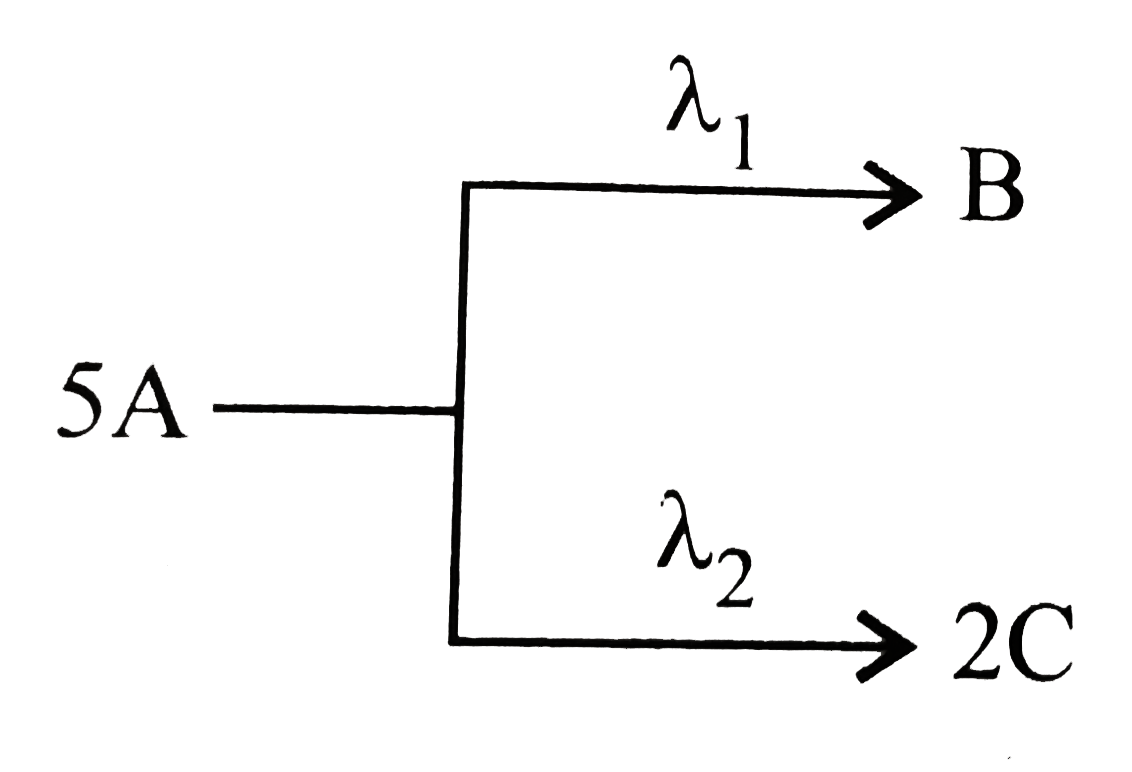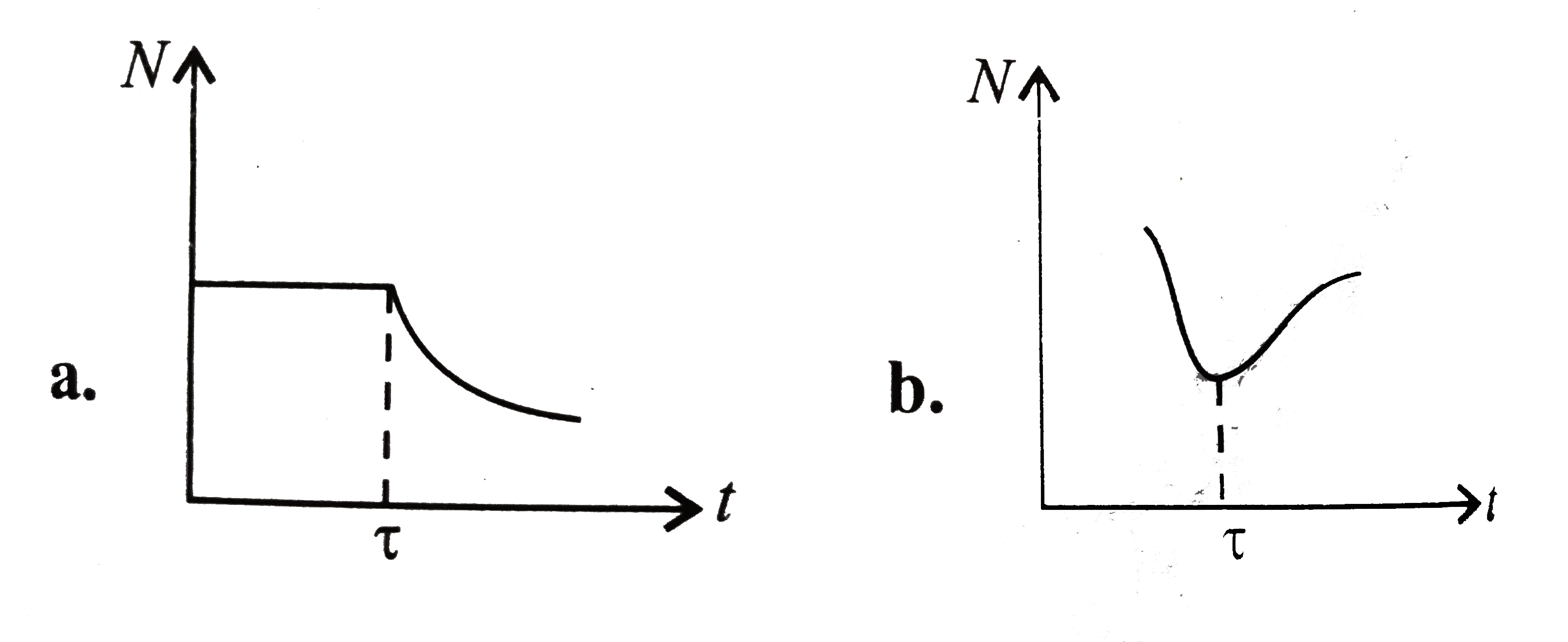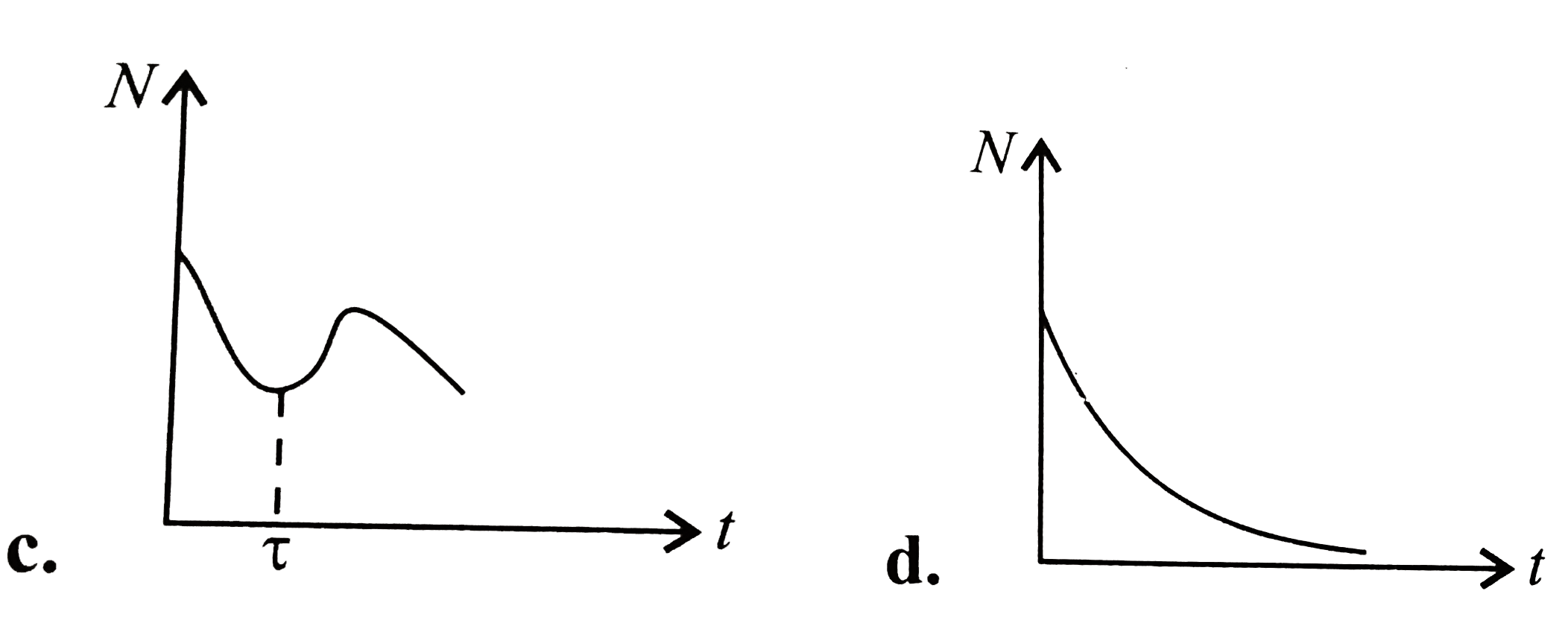Complete Solutions to Illustration of chapter NUCLEAR CHEMISTRY of Class 12 book with complete answers and questions
| Class 12 | CHEMISTRY |
| Chapter | NUCLEAR CHEMISTRY |
| CENGAGE CHEMISTRY | Illustration |
| Number Of Questions | 100 |
| Academic Year | 2023-24 |
What may be the place of a doughter element in the periodic table, which is obtained after the nuclide `._(84)Po^(218)` undergoes, an `alpha`-emission followed by two successive `beta-`emission?
03:06View SolutionIn the decay series `._(92)U^(238)` to `._(82)Pb^(206)`, how many `alpha`-paritcles and how many `beta^(ɵ)`-particles are emitted?
03:33View SolutionWhen nucleus of an electrically neutral atom undergoes a radioactive decay process, it will remain neutral after the decay if the process is
(a) An `alpha`- decay (b) `A bete^(o+)`-decay
(c ) `A gamma`-decay (d) `A K`- caputure process03:01View SolutionArrange in increasing order of:
a. The mass of `alpha, beta`, and `gamma`
b. The penetration power of `alpha, beta`, and `gamma`02:25View Solution`alpha`-rays have ionization power because they possess
01:51View SolutionCalculate the number of neutrons in the remaining atoms after the emission of an alpha particle from `._(92)U^(238)` atom.
02:10View SolutionThe atomic mass of thorium is 232 and its atomic number is 90. During the course of its radioactive disintegration `6 alpha` and `4 beta` particles are emitted. What is the atomic mass and atomic number of the atom?
02:56View SolutionA radioactive element `A` disintegrates in the following manner:
`A overset(- a)rarr B overset(-beta)rarr C overset(-beta)rarr D`
Which one (s) the elements `A, B, C`, and `D` are isotope (s) and which one (s) `is//are` isobar(s)?`02:52View SolutionHow many moles of helium are produced when 1 mole of `._(92)U^(238)` disintegrate into `._(82)Pb^(206)`?
02:17View SolutionIn the given radioactive disintegration series,
`._90^(232)Th to _(2)^(208)Pb`
Calculate value of `(n+2)`.
Where value of n is number of isobars formed in this series, suppose there is successive emission of `beta-`particles.04:48View SolutionIn the given radioactive disintegration series,
`._90^(232)Th to _(2)^(208)Pb`
Calculate value of `(n+2)`.
Where value of n is number of isobars formed in this series, suppose there is successive emission of `beta-`particles.04:48View SolutionIf a `._(92)U^(235)` nucleus upon being struck by a neutron changes to `._(56)Ba^(145)`, three neutrons and an unknown product. What is the unknown product?
02:56View Solution`._(90)Th^(232)` belongs to III group. It items an `alpha`-particle. The daughter element belongs to
a. I group b. II group
III. Group d. IV group01:51View SolutionA heavier element containously emits `alpha`-and `beta`-particles. The finally stable element may belong to:
a. 14th group b. 16th group
c. 10th group d. 12 th group02:20View SolutionRadioactive disintegratin of `._(88)Ra^(226)`
`Ra overset(-alpha)rarr Rn overset(-alpha)rarr RnA overset(-alpha)rarr RaB overset(-beta)rarr RaC`
Determine the mass number, atomic number, and group of periodic table for `RaC`.02:40View SolutionAn atom has atomic mass 232 and atomic number 90. During the course of disintegration, it emits 2 `beta`-particles and few `alpha`-particles. The resultant atom has atomic mass 212 and atomic number 82. How many `alpha`-particles are emitted during this process?
02:43View Solution`._(92)U^(238)` is a natural `alpha`-emitter. After `alpha`-emission the residual nucleus `U_(X1)` in turn emits a `beta`-particle to produce another nucleus `U_(X2)`. Find out the atomic number and mass number of `U_(X1)` and `U_(X2)`.
02:05View SolutionA radioactive nuclide emits `gamma`-rays due to
a. K-electron capture
b. Nuclear transition from higher to lower energy
c. Presence of greater number of neutrons than protons
d. Presence of greater of protons than neutrons02:06View SolutionIn which of the following transformers, the `beta`-particles are emitted?
a. Proton ot neutron b. Neutron to proton
c. Proton to proton d. Neutron to neutron01:25View SolutionDuring the transformation of `._(c )X^(a)` to `._(d)Y^(b)` the number of `beta`-particles emitted are
a. `d + ((a - b)/(2)) - c` b. `(a - b)/(c )`
c. `d + ((a - b)/(2)) + c` d. `2c - d + a = b`03:18View SolutionWhich of the following element is an isodiapher of `._(92)U^(235)`?
01:51View SolutionIn the radioacitve decay
`._(Z)X^(A) rarr ._(z + 1)Y^(A) rarr ._(z - 1)^(A - 4) rarr ._(z - 1)Z^(*A - 4)`
The sequence of emission is
a. `alpha, beta, gamma` b. `gamma, alpha, beta` c. `beta, alpha, gamma` c. `beta, gamma, alpha`02:12View SolutionIn the sequence of the reaction
`A overset(-beta)rarr B overset(-beta)rarr C overset(-alpha)rarr D`, what is the relationship between `D` and `A`?02:25View SolutionThe radiationns from a naturally occuring radioactive substance as seen after deflection by a magnetic field in one direction are
Only `alpha`-rays b. Only `beta`-rays
c. Both `alpha`-and `beta-`rays d. Either `alpha`-or `beta`-rays02:13View SolutionWhich of the following radiations is most easily stopped by air?
a. `alpha`-rays b.`gamma`-rays c. `beta`-rays d.X-rays01:42View Solution`K`-capture
a. Refers to capture by other nucleus of an electron from `K`-shell
b. Results in decrease in `Z`
c. Is of the type
`._(56)Ba^(133) + ._(-1)e^(0) rarr ._(55)Cs^(133) _ gamma`-rays d. All of these02:31View SolutionThe decay of a neutron to a proton also yields
a. `._(-1)e^(0)` b. `._(+1)e^(0)` c. `._(1)H^(2)` d. `._(2)He^(4)`01:15View SolutionWhat may be the new neutron and proton ratio after a nuclide `._(92)U^(238)` loses an `alpha`-particles?
02:07View SolutionThe atomic mass of `F^(19)` is 18.9984 `m_(u)`. If the masses of proton and neutron are `1.0078 m_(u)` and `.0087 m_(u)`. Respectively, calculate the binding energy per nucleon (ignore the mass of electrons). `(1 m_(u) = 931) MeV)`
03:33View SolutionWhich of the following processes causes the emission of X-ray?
02:20View SolutionCalculate the packing fraction of `Ar^(40)` (isotopic weight of `Ar = 39.96238)`.
01:23View Solution`.^(60 m)Co rarr .^(60)Co` emits `gamma`-radiations of wavelength `3 xx 10^(-10)`. Assuming each nuclei emits one wavelength, with what mass per mole of two nuclei differ?
a. `4.43 xx 10^(-9) g` b. `4.43 xx 10^(-4) g`
c. `4.43 xx 10^(-3) g` d. `4.43 g`01:35View SolutionTo which radioactive families do the following nuclides belong?
`.^(222)Rn`, `.^(228)Ra`, `.^(307)Pb`, `.^(209)Bi`, `.^(233)Pa`03:54View SolutionTo which group of the periodic table does the last number of following series belong?
a. `._(94)Pu^(239)` b. `.(58)_Ce^(140)` c. `._(84)Po^(218)`02:20View SolutionCalculate the neutron - proton ratio for each of the following radioactive nuclides.
a. `._(6)C^(14)` b. `._(82)U^(238)` c. `._(82)U^(232)`03:02View SolutionShow that a mass of 1.00 amu is equivalent to 931.5 MeV.
02:39View SolutionCalculate the mass defect and binding energy per nucleon for an alpha particle (containing two protons and two neutrons) whose actual mass is 4.0028 amu (mass of proton = 1.00759 amu, mass of nuetron = 1.00898 amu).
03:50View SolutionWhich of the following are radioacitve?
02:34View SolutionWhich of the following is least stable?
04:59View SolutionWhich of the following nuclides are `beta^(ɵ)` and `beta^(o+)` emitter, and stable nuclides?
a`._(20)Ca^(49)` b`._(80)Hg^(195)`03:11View SolutionAn alkaline earth metal is radioactive. It and its daughter element decay by emitting 3 `alpha`- particles in succession. In what group should the resulting element be formed?
01:46View SolutionIf a nuclide of an element in group I A (1st group) undergoes radioactive decay be emitting `beta^(o+)`, what will be the periodic group of the resulting element?
01:33View SolutionWhich is more unstable of each of the following pairs, and in each case what type of process could the unstable nucleus undergo?
`F^(18)`, `._(10)Ne^(18)`03:03View SolutionTo what stable isotope `._(103)Lr^(257)` decay?
01:17View SolutionWhich one of the following processes `alpha, beta^(o+), beta^(o-)`, or K-capture cause
a. An increase in atomic number
b. A decrease in atomic number
c. Emission of X-rays02:36View SolutionOut of the four series, which series disintegrates in a least branching manner?
01:59View SolutionIN radioactive series, an inner transition element `._(92)U^(238)` loses one `alpha`-particles and one `beta`-particle to produce a very unstable daughter nuclei `._(91)Pa^(234)` with half life 1.14 min. Find out the displacement in group due to these emissions.
01:49View SolutionPredict by what mole (s) spontaneous radioactive decay will proceed for each of the following unstable isotopes:
01:56View SolutionCalculate `t_(1//2)` for `Am^(241)` in years given that it emits `1.2 xx 10^(11) alpha`-particles per gram per second
02:39View SolutionHow many atoms of `0.1 g`-atom of a radioactive isotope `._(Z)X^(A)` (half = 5 days) will decay during the 11th day?
02:37View Solution10 g-atoms of an `alpha`-active radioisotope are disintegrating in a sealed container. In one hour the helium gas collected at STP is `11.2 cm^(2)`. Calculate the half life of the radioisotope.
05:14View SolutionThe half-life period of radon is 3.8 days. After how many will only one-twentieth of radon sample be left over?
01:38View SolutionA counter rate metre is used to measure the activity of a radioactive sample. At a certain instant, the count rate was recorded as 400 counters per minute. Five minutes later, the count recorded was 200 counts per min. Calculate the decay and half-period of the sample.
03:22View Solution`1 g` of `._(79)Au^(198) (t_(1//2) = 65 hr)` decays by `beta`-emission to produce stable `Hg`.
a. Write nuclear reaction for process.
b. How much `Hg` will be present after 260 hr.03:04View SolutionA follow parallel path of first-order reactions giving `B` and `C` as
If the initial concentration of `A` is `0.25 M`, calculate the concentration of `C` after 5 hr of reaction.
 04:00View Solution
04:00View SolutionThe activity of the hair of an Egyptian mummy is 7 disintegration `"min"^(-1)` of `C^(14)`. Find an Egyptian mummy. Given `t_(0.5)` of `C^(14)` is 5770 year and disintegration rate of fresh sample of `C^(14)` is 14 disintegration `"min"^(-1)`.
02:18View SolutionHalf life of a radioactive sample is 10days. What fraction of this sample will remain undecayed after 100days?
02:37View SolutionWhich among the following relations is correct?
(a)`t_(3//4) = 2t_(1//2)`
(b)`t_(3//4) = 3t_(1//2)`
(c)`t_(3//4) = 1/2t_(1//2)`
(d)`t_(3//4) = 1/3t_(1//2)`02:12View SolutionThe half-life period of radium is 1600 years. Calculate the disintegrationd of radium.
01:39View SolutionA radioactive element has half life of `4.5 xx 10^(9)` years. If `80 g` of this was taken, the time taken for it to decay to `40 g` will be
a. `2.25 xx 10^(9)` years b. `4.50 xx 10^(9)` years
c. `6.75 xx 10^(9)` years d. `8.75 xx 10^(9)` years01:33View SolutionThe half-life period of a radioactive element is 140 days. After 560 days, `1g` of the element will reduce to
a. `0.5 g` b. `0.25 g` c. `1//8 g` d. `1//16 g`01:36View SolutionA radioactive isotope decays at such a rate that after 96 min, only `1//8th` of the original amount remains.
The value of `t_(1//2)` of this nuclide is
a. 12 min b. 32 min c. 24 min d. 48 min02:10View Solution80% of the radioactive nuclei present in a sample is found to remain undecayed after one day. The percentage of undecayed nuclei left after two days will be
a. 64 b. 20 c. 46 d. 8002:48View SolutionA radioactive substance has a half life of 5 days. After 20 days it was foundd the `3 g` of the isotope left in the container. The initial weight of the isotope was
`a `48 g` b. `36 g` c. `18 g` d. `24 g`01:50View SolutionThe half life of radium (226) is 1620 years.
The time takend to convert `10 g` of radium to `1.25 g` is
a. 810 years b. 1620 years
c. 3240 years d. 4860 years02:47View SolutionIf equal numer of atoms of two radioactive elements are considered, the most dangerous would be the one with a half life of?
a. 4.0 million years b. 100 years
c. 0.01 second d. 1 second02:07View SolutionRadium has atomic weight 226 and half life of 1600 years. The number of disintegrations produced per second from one gram is
03:28View SolutionA sample of radioactive isotope with a half life of 20 days weighs `1 g`. After 40 days the weight of the remaining elements is
a. `0.5 g` b. `0.0 g` c. `0.25 g` d. `1//6 g`01:29View SolutionOne gram of `Ra^(226)` has an activity of nearly `1 Ci`the half life of `Ra^(226)` is
a. 1500 years b. 300 years
c. 1582 years d. 200 years02:30View SolutionA chemist prepares `1.00 g` of pure `._(6)C^(11)`. This isotopes has half life of 21 min, decaying by the equation:
What is the rate of disintegration per second (dps) at starts ?01:40View SolutionA radioactive isotope `Cs^(137)` has a half life period of 30 years. Starting with `1 mg` of `Cs^(137)` how much would remain after 120 years?
01:50View SolutionIf in 3160 years, a radioactive substance becomes one-fourth of the original amount, find it’s the half-life period.
01:47View SolutionA radioisotope has `t_(1//2) = 3` years. After a given amount decays for 12 years, what fraction of the original isotope remains?
01:31View SolutionA radioactive element has half-life period of 30 days. How much of it will be left after 90 days?
01:40View SolutionThe half -life period of `._(84)Po^(210)` is 140 days.
In how many days `1 g` of this isotope is reduced to `0.25 g`?01:38View SolutionCalculate the average life of a radioactive substance whose half-life period is 100 years.
01:06View SolutionThe activity of a sample of radioactive element `X^(100)` is 6.02 curie. Its decay constant is `3.7 xx 10^(4) s^(-1)`.
The initial mass of the sample will be
a. `10^(-6) g` b. `10^(-8) g` c. `10^(-20) g` d. `10^(-15) g`02:52View SolutionThe time of decay for the nuclear reaction is given by `t = 5 t_(1//2)`. The relation between average life `tau` and time of decay `(t)` is given by
a. `3 tau "In" 2` b. `4 tau "In" 2` c. `5 tau "In" 2` d. `6 tau "In" 2`02:36View SolutionA certain radio isotope `._(Z)X^(A)` (half life `= 10 ` days) decays to give `._(Z-2)Y^(A-4)` . If `1.0 g` atom of `X` is kept in a sealed vessel, find the volume of helium accumulated at `STP` in `20` days ?
03:16View SolutionOne mole of A present in a closed vessel undergoes decays as:
`._(Z)A^(m) rarr ._(Z - 4)B^(m - 8) + 2 (._(2)He^(4))`
What will be the volume of helium gas collocted at `STP` afterd 20 days `(t_(1//2) "of" A = 10` days)?02:56View SolutionOne mole of `X` present in a closed vessel undergoes decays as:
`._(Z)X^(A) rarr ._(Z - 2)Y^(A - 4) + (._(2)He^(4))`
What will be the volume of helium gas collected as `SATP` and `STP` (1 bar pressures, `273 K` temperature) after 20 days `(t_(1//2) "of" A = 10` days)?03:14View SolutionWhat mass of `Ra^(226)` whose `t_(1//2) = 1620` years will give the activity of 1 millicurie?
02:30View SolutionA radioactive substance consists of two distinct having equal number of atoms initially. The mean products in both cases are stable. A plot is made of total number of radioactive nuclei as a function of time. Which of the following figures best represents the form of this plot?

 02:27View Solution
02:27View SolutionIn a smaple of radioactive material, what fraction of the initial number of active nuclei will remain undisingrated after half of a half-life of the sample?
a. `(1)/(4)` b. `(1)/(2 sqrt(2))` c. `(1)/(sqrt(2))` d. `sqrt(2) - 1`02:53View Solution75% of a first order reaction was completed in 32 minutes. When was 50% of the reaction completed ?
02:59View Solution`1.0 g` of a radioactive isotope left `125 mg` after 24 hr. The half-life period of the isotope is
a. 8 hr b. 24 hr c. 6 hr d. 4 hr02:33View SolutionIf the amount of a radioactive substance is increased three times, the number of atoms disintegrated per unit time would
Be doulbe b.Be triple
c. Remian one-third d. Not change02:02View SolutionThree-fourth of a radioactive material decays in 2.5 days. How long will it take for `15//16th` of the material to decay?
a. 2 days b. 5 days c. 7.5 days d. 10 days02:53View SolutionWhich of the following radio-isotope would you use to date object each one of them if the object is expected to be about 100 years old?
01:50View SolutionThe half life of a radioactive element is 30 min. One sixteenth of the original quantity of element will be left after
a. 1 hr b. 16 hr c. 4 hr d. 2 hr02:09View SolutionA sample of rock moon contains equal numbers of atoms of uranium and lead `t_(1//2)` for `U` is `4.5 xx 10^(9)` years. The age of rock would be
a. `4.5 xx 10^(9)` years b. `9.0 xx 10^(9)` years
c. `13.5 xx 10^(9)` years d. `2.25 xx 10^(9)` years02:35View SolutionThe half-life period of `U^(234)` is `2.5 xx 10^(5)` years. In how much is the quantity of the isotope reduce to 25% of the original amount?
02:36View SolutionWhat do you understand by the following notatins in respect of the types of artificial transmutation?
a. `(n, beta^(ɵ))` b. `(p, beta^(ɵ))`02:06View SolutionIn artificial transmutation which has stronger striking ability and why proton or neutron move with the same speed?
01:53View SolutionComplete the following nuclear equations:
a. `._(96)Cm^(246) + ._(6)C^(12) rarr ._(102)No^(254) +` …..
b. `._(94)Pu^(239) + ….. rarr ._(96)Cm^(242) + ._(0)n^(1)`03:10View SolutionCalculate the energy released in the following:
`._(1)H^(2) + ._(1)H^(3) rarr ._(2)He^(4) + ._(0)n^(1)`
(Given masses : `H^(2) = 2.014, H^(3) = 3.016, He = 4.003, n = 1.009 m_(u))`02:24View SolutionThe beta activity of `1 g` of carbon made from green wood is 15.3 counts per minute. If the activity of `1 g` of carbon derived from the wood of an Egyptian mummy case is 9.4 counts per minute under the same conditions, how old is the wood of the mummy case?
04:01View SolutionCalculate the loss in mass during the change:
`._(3)Li^(7) + ._(1)He^(1) rarr 2 ._(2)He^(4) + 17.25 MeV`02:10View SolutionThe atomic mass of Li,He, and proton are 7.01823 amu, 4.00387 amu, and 1.00715 amu, respectively. Calculate the energy evolved in the reaction.
`._(3)Li^(7) rarr ._(1)P^(1) rarr 2 ._(2)He^(4) + Delta E`
Given 1 amu `= 931 MeV`.03:08View SolutionCalculate the energy released in joules and `MeV` in the following nuclear reaction:
`._(1)H^(2) + ._(1)H^(2) rarr ._(2)He^(3) + ._(0)n^(1)`
Assume that the masses of `._(1)H^(2)`, `._(2)He^(3)`, and neutron `(n)`, respectively, are 2.40, 3.0160, and 1.0087 in amu.02:57View Solution
Illustration questions and complete solutions for chapter NUCLEAR CHEMISTRY of CENGAGE CHEMISTRY (ENGLISH) of Class 12
All Exercises from CENGAGE CHEMISTRY Class 12 CHEMISTRY NUCLEAR CHEMISTRY
- Archives Assertion-Reasoning
- Archives Fill In The Blanks
- Archives Integer-Type
- Archives Linked Comprehension
- Archives Multiple Correct
- Archives Single Correct Anser
- Archives Subjective
- Ex6.1 Objective
- Ex6.2 Objective
- Ex6.3 Objective
- Ex6.4 Objective
- Ex6.5 Objective
- Exercise Fill In The Blanks
- Exercise True/False
- Exercises Assertion-Reasoning
- Exercises Link Comprehension
- Exercises Multiple Correct
- Exercises Single Correct
- Fill in the Blanks Type
- Illustration
- Solved Example
- True//False Type
